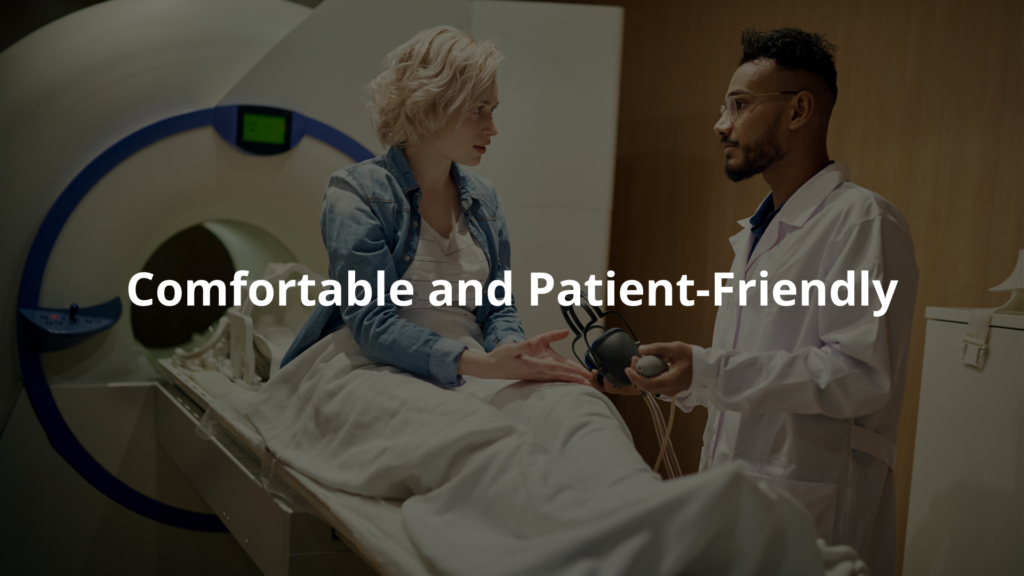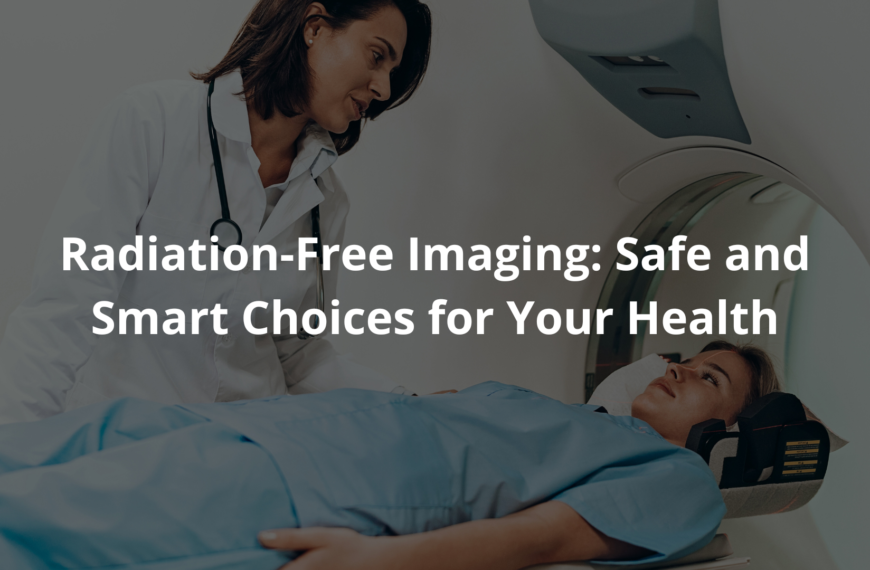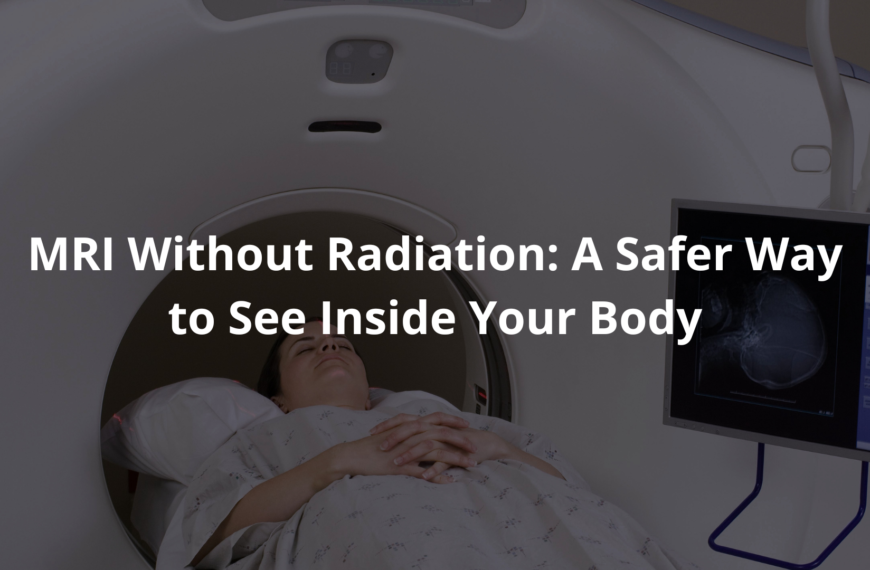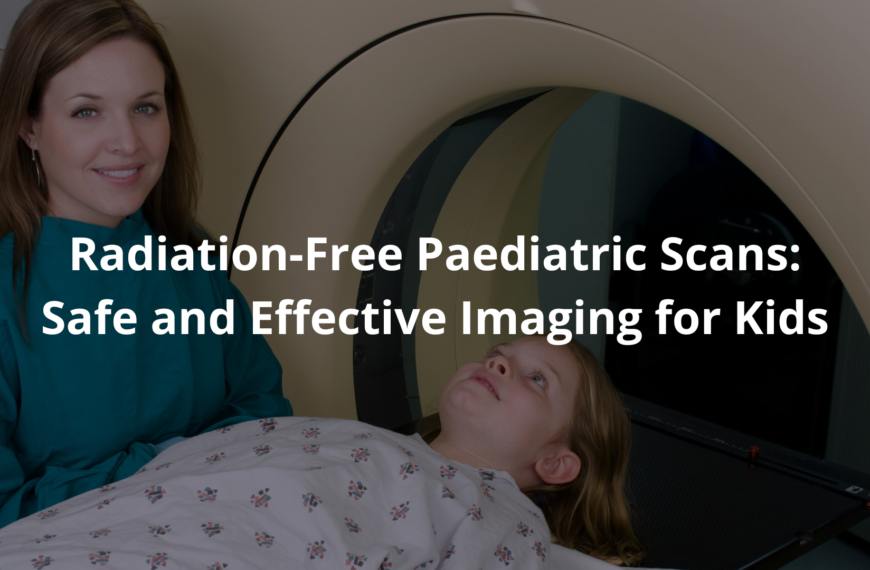Benefits of Non-Radiative Imaging: Discover the benefits of non-radiative imaging for quick, safe medical diagnoses!
Think of non-radiative imaging as a friendly peek inside. It’s a way to check what’s happening in the body without using X-rays, which can be a bit rough (they involve radiation, you see). Ultrasound and MRI are two common types, and they are much kinder.
The great thing is they don’t hurt, and doctors can get a good look at organs and tissues. For instance, an MRI machine uses strong magnets, plus radio waves, to make detailed pictures. This is important for keeping patients safe, especially kids and pregnant women.
There’s versatility, too; doctors can use it for a number of different health issues. Interested to learn more? Keep reading to understand the whys and wherefores.
Key Takeaway
- Non-radiative imaging keeps patients safe from harmful radiation.
- It gives detailed pictures of soft tissues without pain.
- These methods are quick and can be done many times.
The Safety of Non-Radiative Imaging
Credits: nabil ebraheim
These non-radiative imaging techniques, they’re a bit of a marvel, really. Imagine diagnostics that don’t involve any radiation whatsoever. It’s a shift away from traditional X-rays and CT scans (which do involve radiation, mind you) and that’s a good thing for patient safety, especially regarding long-term side effects.
Now, what are the imaging types that can be used? There’s a few that are popping up in the SERPs as well as being mentioned with the keywords:
- Magnetic Resonance Imaging (MRI): This uses strong magnetic fields and radio waves to create detailed images of the organs and tissues in the body.
- Ultrasound: This is used to view soft tissues, such as muscles, blood vessels, and organs.
- Optical Imaging: Light is used to generate images of the body.
For children and pregnant women, this avoidance of ionising radiation is especially crucial; they are, arguably, more sensitive to its potential harms. Regular check-ups or necessary scans no longer necessitate the stress of weighing radiation exposure against diagnostic need.
One might think, if there isn’t radiation present, that there isn’t any potential for negative side effects. Maybe consider asking your doctor if the facility has non-radiative imaging machines to keep yourself safe?
Detailed Imaging Without Pain
Fair dinkum, the idea of peering inside the human body shouldn’t involve discomfort. It’s almost barbaric to think otherwise, really. That is why these non-radiative imaging techniques are taking off as a more favourable option. Techniques like MRI (Magnetic Resonance Imaging) and ultrasound offer astonishingly detailed, high-resolution views of soft tissues. Remarkable stuff, indeed, and all without causing pain.
- Organs are observable in a completely non-invasive manner.
- Muscle fibres can be scrutinised
- Even blood flow can be monitored, all without the slightest prod or poke.
These scans provide doctors with invaluable insights, enabling a better understanding of the inner workings. Instead of just stabbing around in the dark, healthcare professionals can now access a trove of comprehensive visual information.
The versatility (or should I say, versatility) of these techniques lies in their ability to paint a complete and clear internal picture, with resolution measured in millimetres (mm) for MRI. One consideration is to find out what the image resolution is before undergoing imaging procedures.
No Cumulative Radiation Risk
Crikey, the thought of tracking radiation exposure over a lifetime sounds like a proper headache. Like keeping score in a never-ending game of dodgy odds. With non-radiative imaging, you can chuck that worry right out the window, mate. Unlike traditional X-rays or CT scans, these methods can be safely performed repeatedly, without contributing to your cumulative radiation dosage.
This becomes particularly beneficial for individuals managing chronic conditions that necessitate regular monitoring, like those with inflammatory bowel disease (IBD). They require routine scans to assess disease activity.
- This allows healthcare professionals to monitor the disease’s progression
- This allows healthcare professionals to adjust treatment plans as necessary
- Without concerns about the long-term effects of radiation exposure. [1]
So, if you’re facing the prospect of multiple scans, ask your doctor about these non-radiative options, it will likely give you peace of mind.
Enhanced Diagnosis with Non-Radiative Imaging
Having more than one set of eyes on a problem is always good, isn’t it? It is especially true for internal diagnostics. Non-radiative imaging complements other diagnostic tools, adding another layer of insight. For instance, an MRI scan can sometimes reveal details that a standard X-ray might miss, providing a more complete picture of what’s happening beneath the surface.
- MRI provides high-resolution images of soft tissues, which can reveal subtle abnormalities.
- Ultrasound can be used to visualise blood flow and identify blockages.
- Optical imaging can be used to detect inflammation and other signs of disease. [2]
The more information at hand, the better informed the decision-making process for healthcare professionals. So, when you’re discussing treatment options with your doctor, be sure to explore how non-radiative imaging can contribute to a more comprehensive understanding of your condition.
RANZCR’s Take on Non-Radiative Imaging
The Royal Australian and New Zealand College of Radiologists (RANZCR), they’re no dummies, see. They’re dead serious about non-radiative imaging. RANZCR establishes guidelines to guarantee that patients receive the safest and most optimal care possible. RANZCR emphasizes the importance of considering non-ionising modalities like ultrasound and MRI whenever feasible.
This minimises unnecessary radiation exposure. Not only that, but RANZCR actively promotes education and training to make sure healthcare professionals are up to date on the latest advancements in non-radiative imaging.
These guidelines from RANZCR help to standardise imaging protocols. RANZCR also ensures that medical practitioners consider non-radiative options first. This shift towards non-ionising techniques reflects a broader commitment.
A commitment to patient safety within the medical community; not to mention, reducing the risk of long-term health complications. The medical community sees the value of non-radiative imaging modalities. The use of these modalities is a testament to their efficacy, as well as how effective they are.
Comfortable and Patient-Friendly

A visit to the doctor can spark some nerves, who’s to say. Yet, non-radiative imaging often makes the experience more manageable. Procedures are typically quick and straightforward. Patients avoid anaesthesia or extended waiting times, which lowers tension. Instant results are often available.
- No injections
- No harsh noises
- Results immediately
Additionally, these modalities prioritise comfort, and frequently, no special preparation is needed. The patient-centric approach of these techniques helps foster a more reassuring setting. The technology allows for a comfortable assessment, and the medical practitioners are also able to diagnose with accuracy. If you’re feeling a bit anxious about an upcoming scan, have a chat with your doctor about what to expect.
Cost-Effective and Reducing Healthcare Costs
Medical costs, they can quickly balloon, and one could say they’re a right menace! Non-radiative imaging can potentially ease the burden. Often being outpatient, these scans minimise long hospital stays. A cost-effective plan, for both the patient and the healthcare system as a whole.
- Reduced hospital stays
- Reduced time away from work
- Less worries about potential long-term health issues.
The reduced radiation exposure also helps to mitigate long-term health problems. That, in the long run, saves money. It might be wise to consider non-radiative options with your doctor. This will help to manage your healthcare costs more effectively.
Real-Time Imaging and Quick Diagnosis
When something’s gone pear-shaped, the name of the game is speed. Now, non-radiative imaging often delivers in that department, offering real-time images. Doctors can observe issues and potential issues in real-time. Doctors can also watch the system in real time as well, what more could they want? This immediate visual feedback is a bit like having a peek under the hood while the engine’s running, or should I say, lying there.
This speedy diagnosis facilitates timely intervention and custom treatment strategies, ensuring optimal care. It streamlines the process, allowing doctors to make immediate assessments and adjustments as required.
- Real-time imagery helps in the precise guidance of treatments, like biopsies.
- Real-time imagery enables doctors to assess the efficacy of treatments right away.
- Real-time imagery facilitates immediate modifications to treatment.
If you’re looking at a scan, ask your doctor how quickly you can expect the results.
Tracking Disease Progression
For those grappling with long-term health battles, keeping tabs on changes over time becomes essential, like plotting a course on a long voyage. Non-radiative imaging permits continuous monitoring, enabling doctors to chart the progression of a disease. The patient can see how a disease is progressing and decide if treatments are working.
This ongoing observation helps tweak treatment. The ongoing observation also helps in making the best possible course corrections.
- The continuous monitoring allows for prompt modifications to treatment.
- The continuous monitoring helps doctors make adjustments.
- The continuous monitoring maximises positive outcomes.
So, if you’re dealing with a chronic condition, be sure to discuss how non-radiative imaging can help track its progress and adjust your treatment accordingly.
FAQ
What makes imaging without radiation both non-invasive and painless?
Non-radiative imaging like ultrasound, MRI, and optical imaging don’t use harmful rays. These tests are non-invasive because nothing cuts into your body. They’re painless too – you just lie still while the machine works. Most people find these tests comfortable for patients since there’s no pain or needles. This makes the whole process less scary, especially for kids who might be nervous about medical tests.
Why are these tests safe for kids and moms-to-be since they have no radiation exposure?
Tests like ultrasound and MRI don’t use radiation that could harm growing bodies. This makes them pregnancy-safe imaging and good for paediatric imaging. Doctors can do repeated procedures without worrying about radiation building up. The safety of no radiation exposure means these tests are often the first choice for children and pregnant women. Parents can feel good knowing these scans won’t harm their little ones.
How do high-frequency sound waves help doctors see inside you right away?
Ultrasound uses high-frequency sound waves that bounce off your insides to make pictures instantly. This real-time imaging lets doctors see your organs moving as they happen. They can spot problems and make quick diagnosis while you’re still on the table. The doctor can move the scanner around to see different angles, creating dynamic imaging of your heart beating or a baby moving. You often get answers right away instead of waiting days.
How do MRI machines use magnetic fields and radio waves to see inside you?
Magnetic Resonance Imaging (MRI) uses big magnets to line up water in your body. Then radio waves make these water bits give off signals. The machine catches these signals to make detailed internal imaging pictures. MRI is great for soft tissue imaging without any harmful rays. It shows small details in your brain, spine, and organs that other tests might miss. The pictures have high-resolution images that help doctors spot tiny problems early.
What are microbubbles and how do they help with special ultrasound tests?
Contrast-enhanced ultrasound uses tiny microbubbles that get injected into your blood. These bubbles are non-radioactive materials that bounce sound waves back strongly. This makes blood flow easier to see, showing how organs are working. The bubbles leave your body when you breathe out, making them safer than other contrast materials. This technique works well for looking at your liver, heart, and other organs during cardiovascular imaging.
How do light-based imaging tests help doctors see what’s happening in your cells?
Optical imaging uses light to see inside tissues. Fluorescence makes special dyes glow, while bioluminescence catches light made by cells themselves. These methods allow molecular targeting to track specific parts inside cells.
They give molecular-level insights about what’s happening in your body. Scientists use these for cellular behavior assessment and to watch diseases develop. These techniques help doctors understand exactly what’s going wrong at the smallest level in your body.
Why are these imaging methods cheaper and how do they save money in healthcare?
Non-radiative tests often use less expensive equipment that doesn’t need special radiation-proof rooms. Many use portable imaging devices doctors can bring right to your bed for point-of-care diagnostics. Most are outpatient procedures so you don’t stay overnight.
This, plus fewer complications and reduced recovery time, leads to reduced healthcare costs. Finding problems early through these cost-effective methods prevents more expensive treatments later. These tests can also be part of tailored treatment plans that save money in the long run.
Conclusion
These non-radiative imaging techniques? They’re a ripper for modern medicine in Oz. They give us detailed pictures without the worry of radiation, which is bonza for keeping everyone safe. With things like ultrasound and MRI, doctors can quickly work out what’s going on and make a plan that’s just right for you. And as these get even better, they’ll be huge for looking after patients and getting better results.
References
- https://bensonradiology.com.au/uploads/Documents/PIS-G03-Benefits-and-risks-of-medical-imaging-radiation-V1-eff-19-12-14.pdf
- https://www.prpimaging.com.au/non-invasive-imaging-technologies-at-prp/




